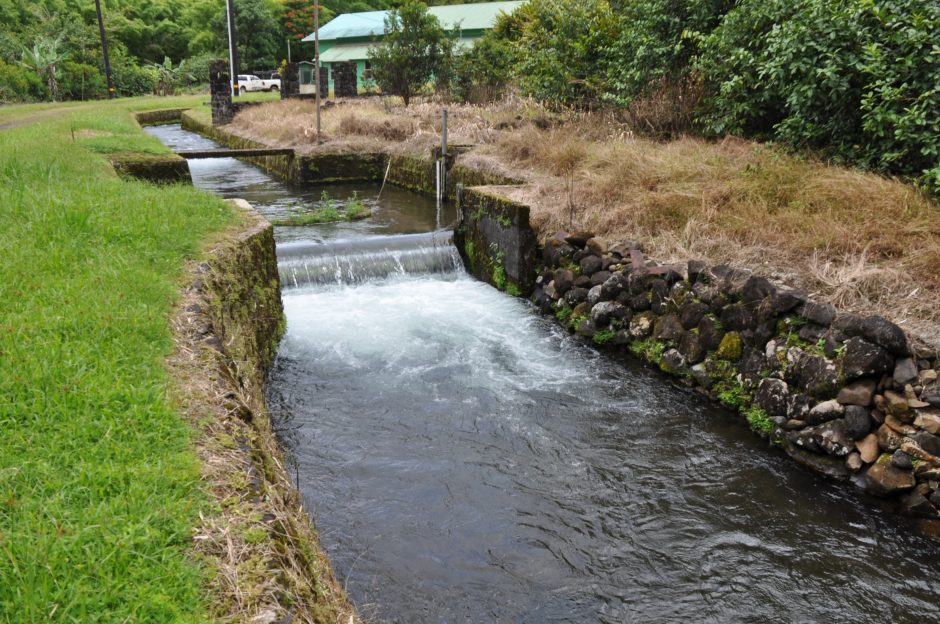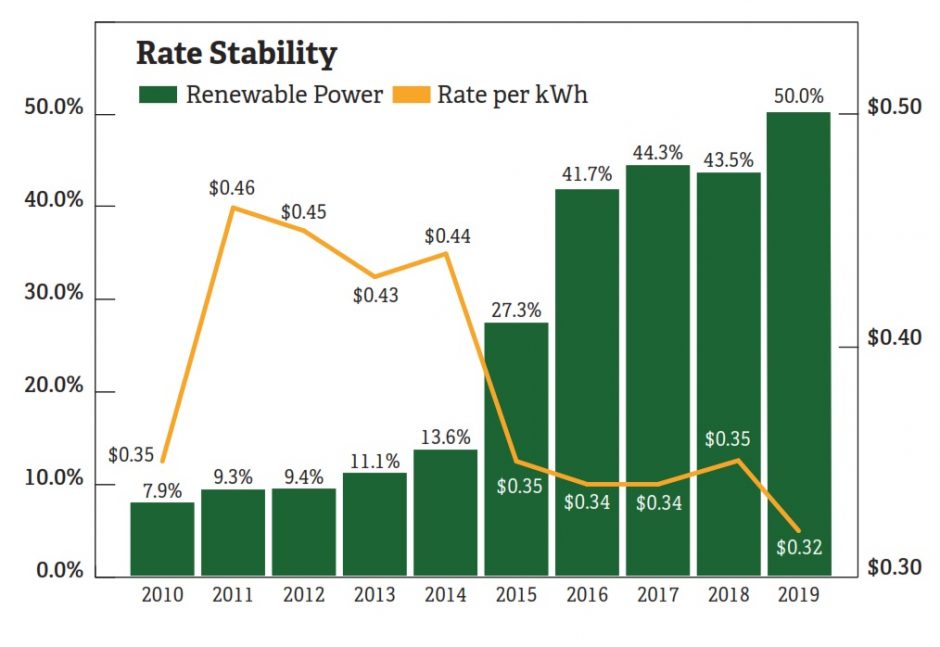In 2002 a group of local business people in Kaua‘i, one of the islands of Hawaii, acquired Kauaʻi Electric from Citizens Utilities, converting it into a co-op.
Shortly afterwards, the newly formed Kaua’i Island Electric Cooperative (KIUC), which now serves 33,000 electric accounts in an island of 70,000 people, embarked on a journey to 100% renewable power using biomass, hydropower and solar sources.
Back then, Kaua‘i’s electric rates were among the highest in the nation. But the increase in renewables has enabled the co-operative to achieve rate stability over the past five years. In 2019 alone KIUC achieved a savings of US$3.8m from its utility-scale solar and battery resources when compared to the average cost of diesel.

Last year, KIUC met 67% of its demand with renewables, a combination of solar (direct to grid and stored in batteries), hydro and biomass. The co-op anticipates it will hit the same mark this year and says it is one step closer to achieving its board’s strategic goal of 70% renewable generation and the State of Hawaii mandate of 100% renewable by 2045.
“If our latest renewable project (West Kauai Energy Project) is successfully brought to completion, we should be getting close to 90% renewable by 2026,” says communications manager Beth Tokioka.
The co-op has been among the pioneers in the industry – unveiling the world’s first utility-scale solar plus battery storage generation facility in March 2017. Through its 3 megawatt Tesla solar field, which is coupled with a 52 megawatt hour battery storage system, KIUC is able to store solar power during the day and dispatch it over a four-hour period during the evening peak demand. The co-op’s renewable portfolio also includes more than 16 megawatts of hydro power, and 7 megawatts of biomass.
The transition to renewables has been a key strategic focus for KIUC’s board since 2002 in line with state of Hawaii’s objective of achieving 100% renewable energy generation by 2045.

“All of Hawaii has traditionally been dependent on imported fossil fuels for electricity generation,” adds Ms Tokioka. “That is not only bad for the environment, but the volatile pricing of oil leaves electricity customers with no way to plan for what their monthly bills will be. KIUC’s first strategic plan, which was adopted in 2008, included a number of renewable technologies that were identified for exploration.
“From 2009 to 2020, we transitioned from being more than 90% dependent on fossil fuels, to generating 67% of our electricity from renewables. We have also found that replacing the volatile pricing of fossil fuels with relatively low-priced renewables has created significant rate stability over the past five years; and we expect that to continue.”
The co-op now has 29,000 residential members and 4,000 commercial members, with whom it engages on a regular basis via its quarterly magazine, news releases, direct email communication, social media and direct mail.
“KIUC conducts an annual membership satisfaction survey and this year we received the highest marks from members in the seven years of the survey,” says Ms Tokioka. ‘KIUC received its highest ratings for its employee-related attributes (e.g., friendly and courteous, knowledgeable and professional, overall customer service and communications with members.”
She adds: “We work very hard to keep members informed during outages. We have a user-friendly outage map on our website and post notifications and updates about outages on our Facebook page 24/7. Prior to severe weather events, we are proactive in issuing mass emails, news releases and social media posts about how to prepare and what to expect if they experience an outage. We respond promptly to emails, phone inquiries and social media messages and comments. Being proactive in communication and being responsive to inquiries is key to member satisfaction.”
Could this model be replicated elsewhere? While she admits “every situation is unique,” Ms Tokioka thinks locals should consider the co-operative model when an investor-owned utility is looking to sell.
“On Kauai, we were fortunate that an investor-owned utility was looking to sell Kauai Electric in the mid-1990s, and some local businesspeople were aware of the opportunities a co-operative could offer our community. Placing the governance of the utility into the hands of the people of Kauai, rather than a mainland-based IOU, has made a tremendous difference here. Any time a willing seller of a utility is identified, the co-operative model should be explored,” she says.
This article has been amended. An earlier version stated that Kaua‘i’s population was 700,000 instead of 70,000.